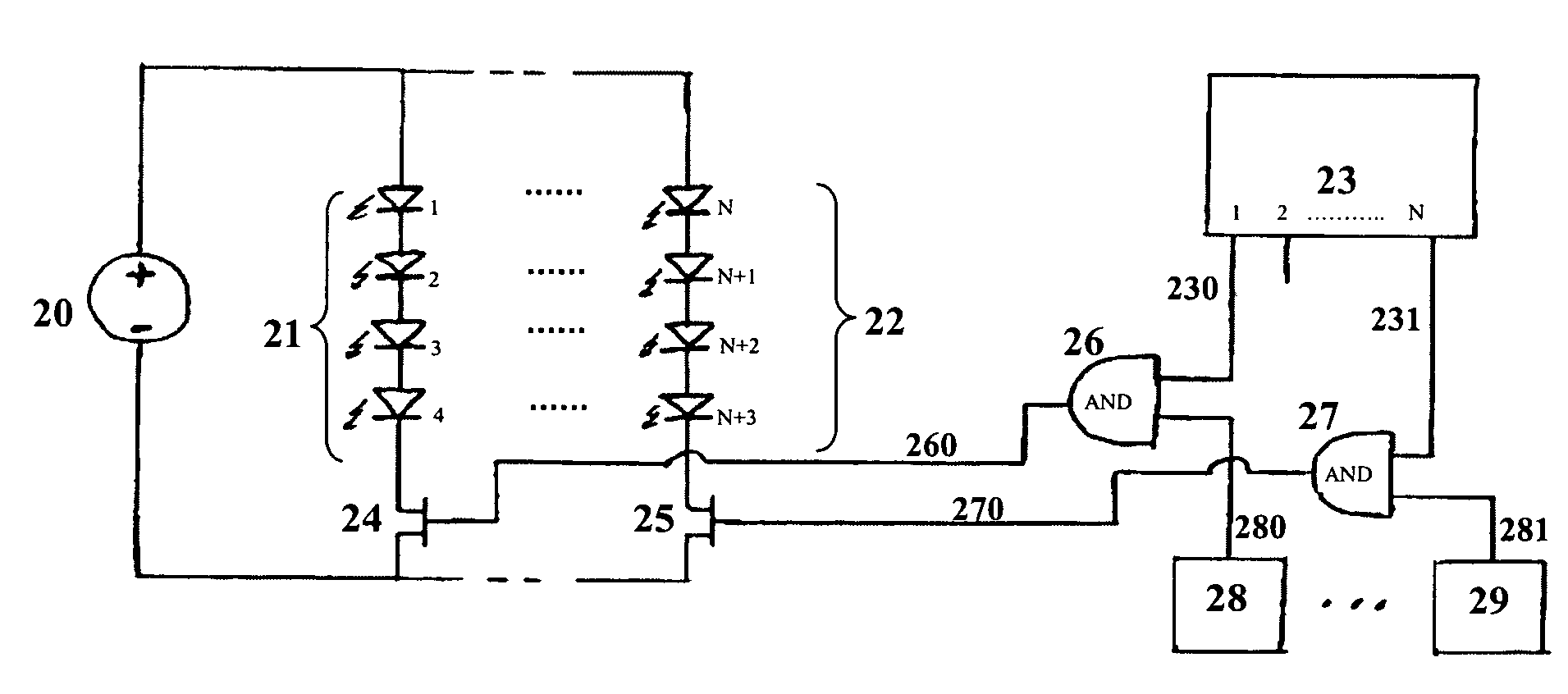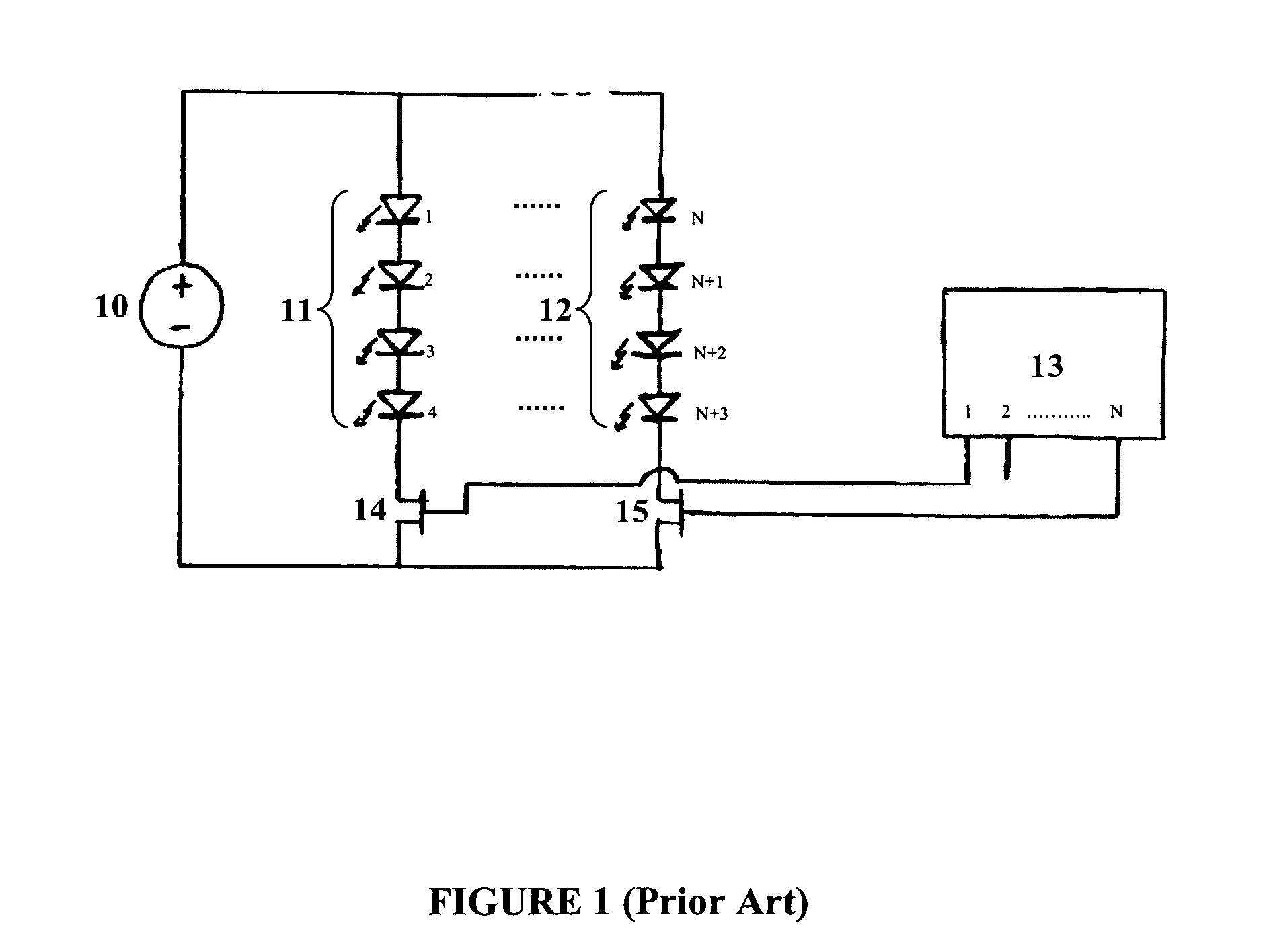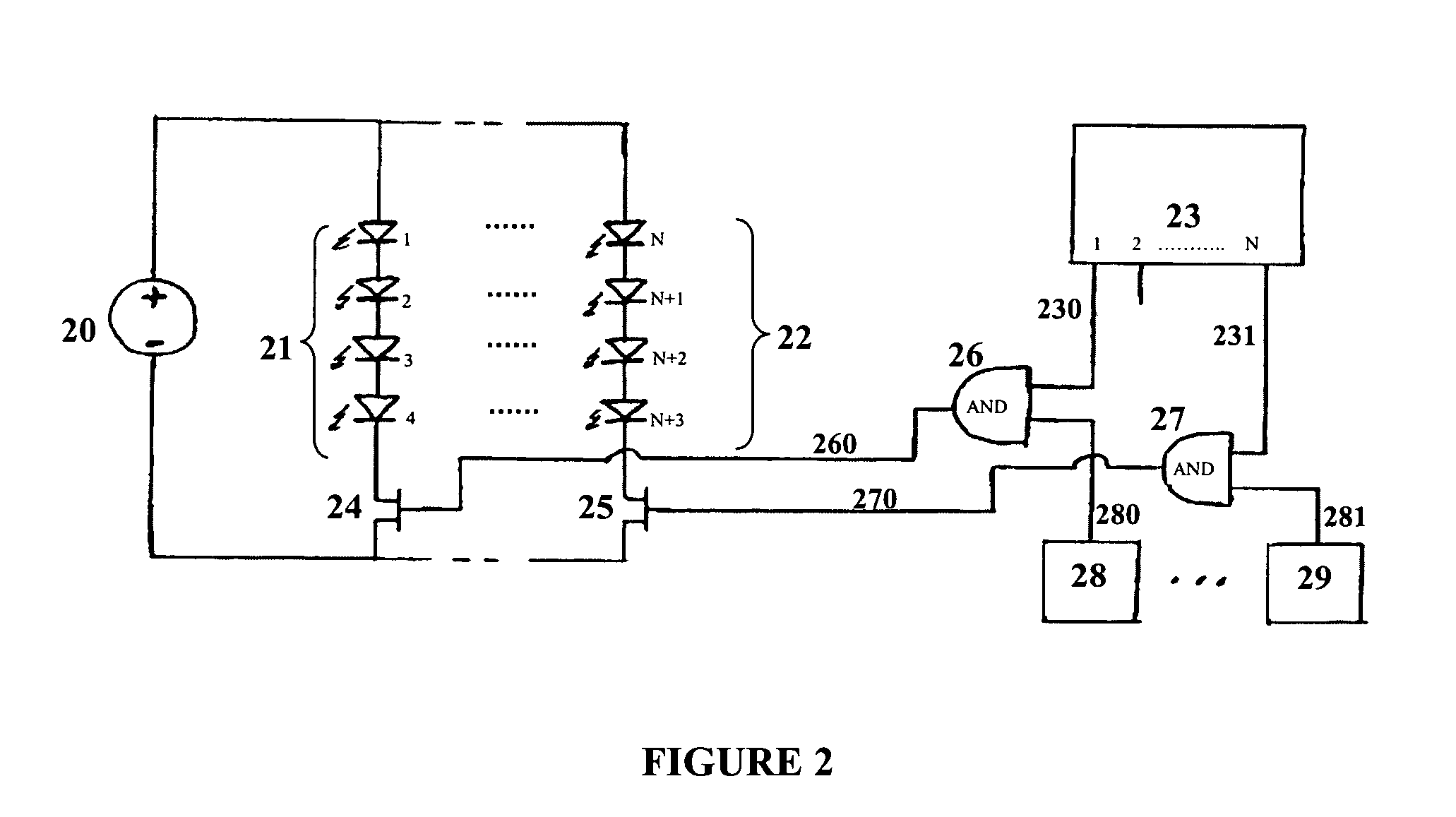Method and apparatus for scaling the average current supply to light-emitting elements
a technology of average current supply and light-emitting elements, applied in the field of light-emitting, can solve the problems of low efficiency, large number of components, and low work efficiency
- Summary
- Abstract
- Description
- Claims
- Application Information
AI Technical Summary
Benefits of technology
Problems solved by technology
Method used
Image
Examples
Embodiment Construction
Definitions
[0020]The term “light-emitting element” is used to define any device that emits radiation in any region or combination of regions of the electromagnetic spectrum for example the visible region, infrared and / or ultraviolet region, when activated by applying a potential difference across it or passing a current through it, for example. Examples of light-emitting elements include semiconductor, organic, polymer, phosphor-coated or high-flux light-emitting diodes or other similar devices as would be readily understood.
[0021]The term “power source” is used to define a means for providing power to an electronic device and may include various types of power supplies and / or driving circuitry.
[0022]Unless defined otherwise, all technical and scientific terms used herein have the same meaning as commonly understood by one of ordinary skill in the art to which this invention belongs.
[0023]The present invention provides a method and apparatus for scaling the average drive current sup...
PUM
 Login to View More
Login to View More Abstract
Description
Claims
Application Information
 Login to View More
Login to View More - R&D
- Intellectual Property
- Life Sciences
- Materials
- Tech Scout
- Unparalleled Data Quality
- Higher Quality Content
- 60% Fewer Hallucinations
Browse by: Latest US Patents, China's latest patents, Technical Efficacy Thesaurus, Application Domain, Technology Topic, Popular Technical Reports.
© 2025 PatSnap. All rights reserved.Legal|Privacy policy|Modern Slavery Act Transparency Statement|Sitemap|About US| Contact US: help@patsnap.com



